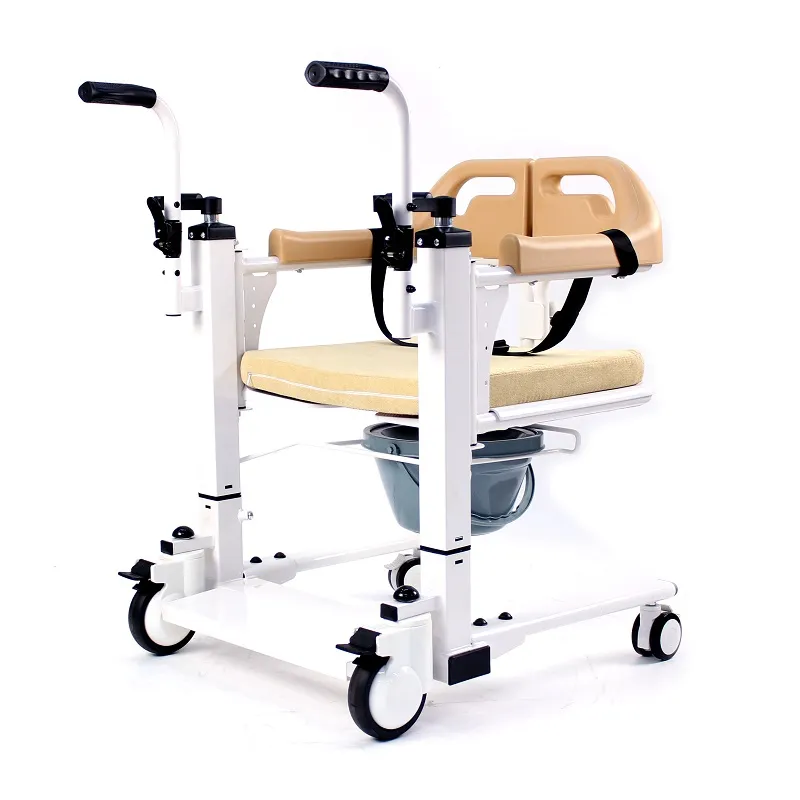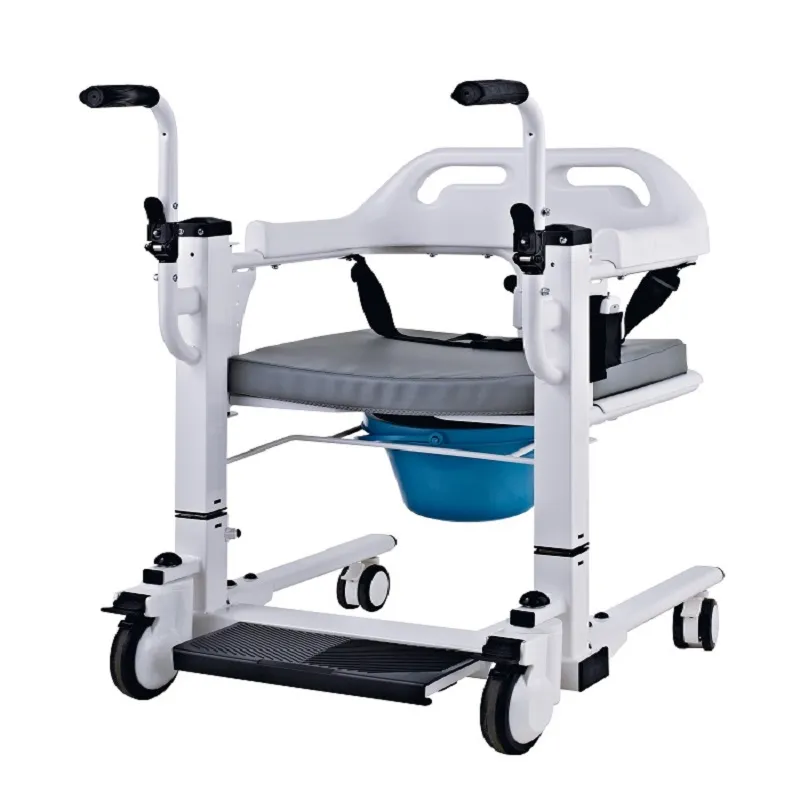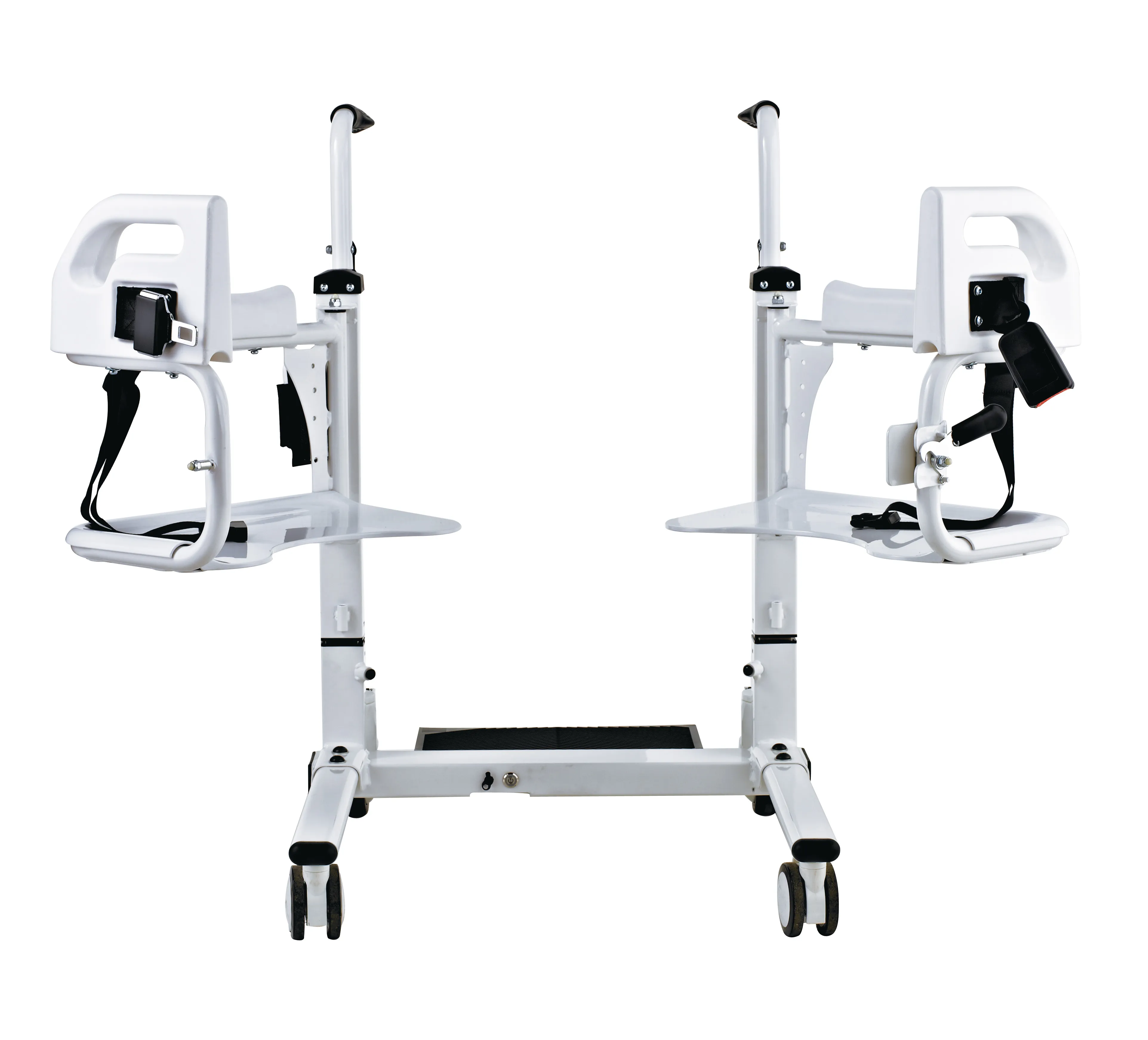In modern healthcare systems, "transferring" is no longer a simple task; it encompasses a comprehensive approach that integrates humanistic care, safety management, and technological design. Especially in the context of an aging population, the rise of chronic diseases, and a surge in the number of people with disabilities and dementia, traditional manual transfer methods are no longer sufficient to meet the needs of efficient, safe, and standardized care.
This has led to the increasing popularity of a specialized device—the patient lift transfer chair—in hospitals, rehabilitation centers, nursing homes, and even homes.
But this raises the question: Why do some people need a patient lift transfer chair? What problems does it solve? Who is it suitable for?
This isn't simply a matter of using a tool; it reflects a comprehensive and systematic logic related to medical safety, patient dignity, nursing efficiency, and technological advancement. This article will examine this issue from multiple perspectives to gain a deeper understanding of why the patient lift transfer chair has become so important and indispensable in modern nursing care.

What is a patient lift transfer chair?
The patient lift transfer chair is a specialized nursing device used to assist individuals with mobility impairments or disabilities in moving their bodies. It combines multiple functions in one device, including:
· Assists patients in transferring from bed to wheelchairs, toilets, bath chairs, etc.;
· Provides vertical lift and horizontal movement;
· Features safety features such as locking, support, and anti-tilt features;
· Suitable for patients of varying body sizes and disability levels.
Its essence lies in achieving "zero-harm" patient transfers through mechanical mechanisms (hydraulic, electric, pneumatic, etc.).

Who really needs a Patient Lift Transfer Chair?
People who need a Patient Lift Transfer Chair:
1. Patients with complete disability or severe mobility impairments
2. Elderly individuals who are bedridden or hospitalized for a long period of time
3. Postoperative patients undergoing temporary recovery
4. Overweight or obese patients
We must be clear: a Patient Lift Transfer Chair is not a device that everyone needs. Its use is highly targeted, primarily serving four key groups of patients for the following reasons.
1. Patients with complete disability or severe mobility impairments
For example, those with post-stroke sequelae, spinal cord injury, late-stage Parkinson's disease, and ALS (amyotrophic lateral sclerosis) often cannot stand and even require support to sit. Manual transfer is not only extremely difficult but also prone to secondary injuries.
The Patient Lift Transfer Chair provides:
· Assistance in getting up, sitting down, and getting in and out of bed;
· Preventing falls and fractures;
· Providing stable support to prevent slipping.
2. Elderly patients who are bedridden or hospitalized for extended periods of time
With the aging population, an increasing number of elderly people are losing their ability to move independently due to muscle atrophy, osteoporosis, and complications from chronic diseases. Elderly patients' skin and bones are extremely fragile, and even minor collisions can cause fractures.
The Patient Lift Transfer Chair provides:
· Easily transfer patients to commodes or bathing areas;
· Reduces the burden on family members and caregivers;
· Reduces the incidence of pressure ulcers.
3. Postoperative patients in the temporary recovery period
For example, patients recovering from joint replacements, fractures, and major medical surgeries need to avoid strenuous movements during their recovery period. Although the patient is conscious, their limbs are unstable. A patient lift transfer chair can effectively prevent secondary injury.
The Patient Lift Transfer Chair solves the following problems:
· Protects the postoperative area from strain;
· Provides flexible, short-term support for movement;
· Facilitates transfers during rehabilitation training.
4. Overweight or Obese Patients
Obese patients often encounter issues with equipment discomfort and manual handling during care, which can easily lead to nursing accidents. Designed specifically for overweight patients, the reinforced patient lift transfer chair provides sufficient weight and space.
The Patient Lift Transfer Chair solves the following problems:
· Provides a strong load capacity (200–250 kg);
· Enhanced structural stability and a spacious seat design;
· Reduces personal risks for caregivers.

Why can't we continue to use traditional patient transfer methods?
Why can't we continue to use traditional patient transfer methods? The answer lies in the significant risks associated with manual lifting, which manifest themselves in the following areas:
Risk 1: Patient Injury
· Improper lifting or lowering can cause muscle strain, fractures, or dislocations;
· Sudden patient slips can lead to head injuries or falls that can cause unconsciousness;
· Handling in confined spaces can easily cause skin injuries, especially for elderly patients.
Risk 2: Caregiver Injury
· Long-term lifting and lifting can lead to lumbar disc herniation and shoulder and neck strain for caregivers;
· Uncoordinated lifting by multiple people can lead to strains, missed steps, and falls;
· Improper posture increases the risk of occupational illnesses.
Risk 3: Low Operational Efficiency and Non-Replicability
· Requires multiple operators, increasing labor costs;
· Long handling times reduce nursing efficiency;
· Lack of standardized management leads to inconsistent quality.
The patient lift transfer chair was developed to address these challenging and critical issues.
The functional details of the Patient Lift Transfer Chair reflect the precision of nursing care
A qualified patient lift transfer chair is more than just a "lift" function; it must also possess the following functional features:
Functional category | Features | Problem Solving |
| Lift function | Electric or hydraulic seat height adjustment (approximately 20cm–60cm) | Enables smooth docking between beds, toilets, and bath chairs of varying heights |
| Move function | Universal silent casters with locking brakes | Avoids slipping, impacts, and misalignment |
| Safety design | Locking armrests, back support, leg support, and safety belt system | Prevents patients from falling and improves sitting stability |
| Toilet function | Hollow seat cushion allows for direct toileting (some models include a potty) | Suitable for patients with moderate to severe disabilities, reducing movement |
| Bathroom compatible | Construction of stainless steel or corrosion-resistant materials, can be rolled into the bathing area | Provides comprehensive cleansing and care |
This high-precision design reflects a deep understanding of patient needs and reflects scientific management of nursing work.
Patient Lift Transfer Chair: Application Value in Different Nursing Scenarios
1. Hospital Use
In hospital wards such as the ICU, rehabilitation, neurology, and orthopedics, the patient lift transfer chair enables "one-person operation, smooth transfers" within the ward.
· Reduces the pressure on nursing staff ratios;
· Improves the efficiency of emergency care and transfers;
· Reduces medical disputes caused by patient falls.
2. Elderly Care Facilities
In long-term care homes and nursing homes, the patient lift transfer chair has become a vital nursing tool:
· Facilitates toileting and cleansing for the elderly;
· Protects fragile bones and reduces pressure sores;
· Enhances the dignity of nursing work.
3. Home Care
For families caring for bedridden elderly individuals at home, the patient lift transfer chair is a key aid:
· Reduces the amount of bending and lifting required by family members;
· One person can perform position changes for bathing, toileting, feeding, and other tasks;
· Safer and less labor-intensive.

Patient Lift Transfer Chair: Domestic and International Usage Trends and Data Reference
According to the "Global Patient Transfer Chairs Market Research 2024" report:
· In the United States, 17% of households over the age of 65 use lift transfer equipment;
· Germany and Northern Europe include patient lift transfer chairs in public health insurance coverage;
· China: With the advancement of home-based elderly care policies, the patient lift transfer chair market has seen an annual growth rate of over 15%;
· Japan, with its highly developed aging society, has included patient lift transfer chairs in the list of essential elderly care equipment.
This demonstrates that patient lift transfer chairs have become a crucial component of "rigid demand" in developed care systems.
The Patient Lift Transfer Chair is a necessity, not a luxury
For patients with limited mobility, decreased muscle strength, or those recovering from illness, the patient lift transfer chair is more than just an assistive tool; it serves as a vital support in daily life. It not only improves transfer efficiency and quality of care, but also implicitly safeguards patients' safety, dignity, and quality of life.
Choosing a patient lift transfer chair isn't about pursuing luxury; it demonstrates a society's and a family's respect and responsibility for patients and the elderly.
"Why would anyone need a Patient Lift Transfer Chair?" Because in times of helplessness, it's a "robot hand" that can lift up bodies and lift up hopes.
What regions do you export to, and how do you ensure product compliance?
We export to over 50 countries across North America, Europe, Southeast Asia, and the Middle East. Every shipment of our medical equipment, from hospital beds to walking frames, is accompanied by CE certification and applicable compliance documentation.
Our factory meets both FDA and ISO13485 standards, and we provide export-friendly pricing, detailed quotes, and bulk shipping arrangements.










